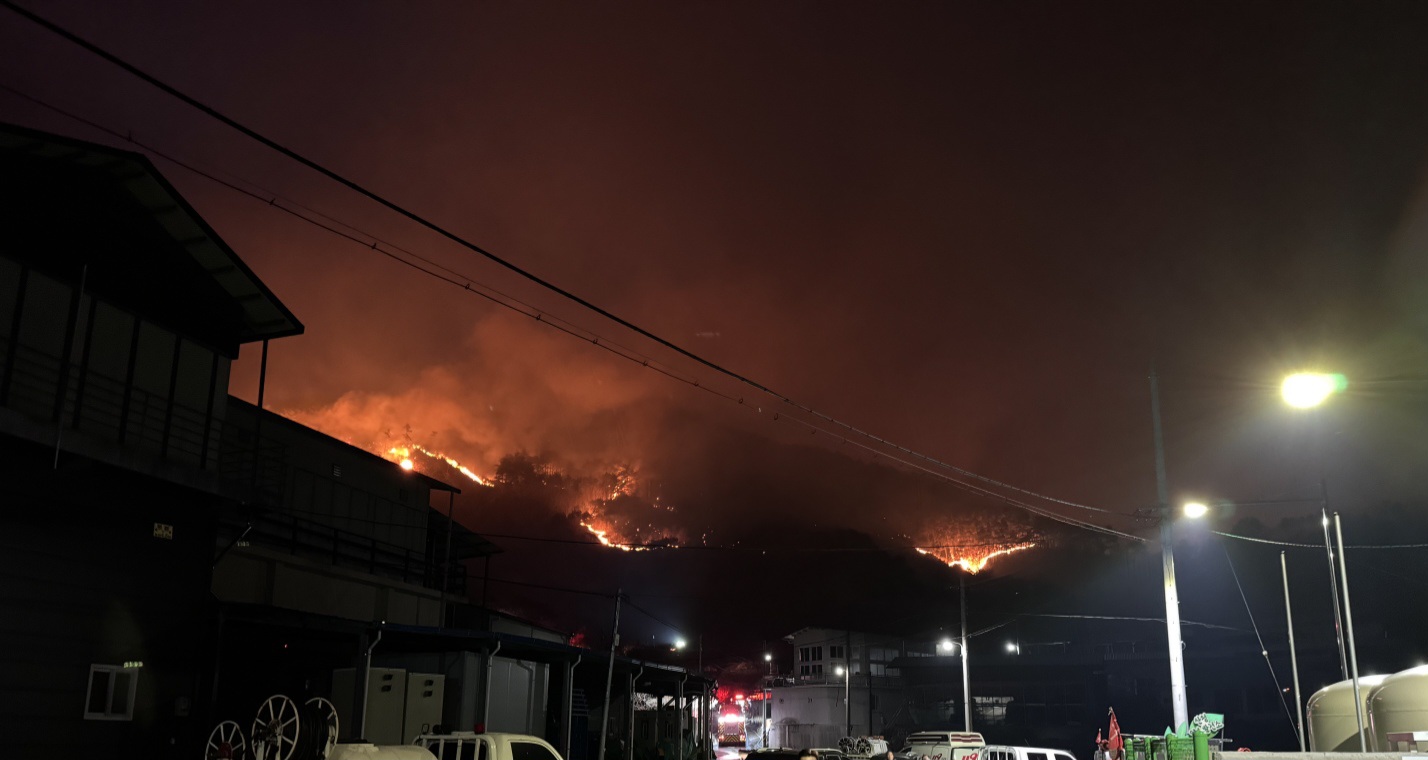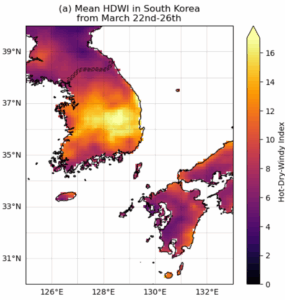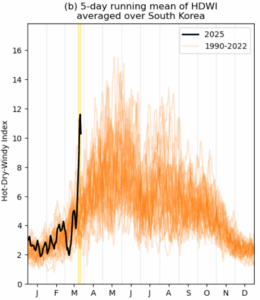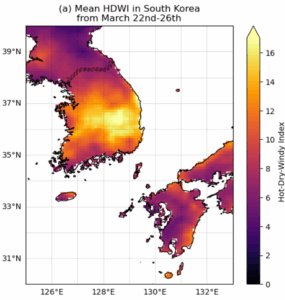
Unprecedented Wildfire Crisis in Southeastern Korea: An In-Depth Analysis
In the early months of 2025, the southeastern region of South Korea faced its most severe and destructive wildfire outbreak in recorded history. The series of fires, igniting unexpectedly over a span of just a few days, resulted in catastrophic environmental and human tolls.
Scope and Impact of the 2025 Wildfires
Starting on March 22nd and escalating rapidly over the following days, more than a dozen separate fires consumed over 48,000 hectares of land-an area significantly larger than previous incidents, surpassing the 2022 April wildfires by over 20,000 hectares and exceeding the annual average burned area by more than tenfold. These fires are now recognized as the deadliest in South Korea’s history, claiming 32 lives and injuring 45 others, with approximately 37,000 residents displaced (AFP, 2025). The majority of casualties were elderly individuals in their 60s and 70s. Uiseong County bore the brunt, with 26 fatalities, while Sancheong reported four deaths. The destruction extended to over 5,000 structures, including homes, farms, and industrial facilities (McGrath, 2025).
Vulnerable Communities and Cultural Losses
Rural and peri-urban zones, especially those where residential areas abut forested landscapes-commonly known as Wildland-Urban Interface (WUI) zones-suffered the most. Uiseong, notably, lost the historic Gounsa Temple, established in 618 AD, along with 30 other cultural heritage sites, including relics from the Joseon Dynasty (Sang-Soo, 2025). The destruction of such sites underscores the cultural and historical significance of these fires, beyond their immediate environmental impact.
Climatic Conditions and Human Influence
Although wildfires are typical during Korea’s dry season from March to April, the 2025 event was characterized by extraordinary meteorological conditions. The months preceding the fires experienced an unprecedented lack of rainfall, coupled with temperatures soaring more than 10°C above the seasonal average. To understand whether climate change amplified these conditions, an international research team comprising experts from South Korea, the Netherlands, Sweden, Denmark, Mexico, the United States, and the United Kingdom conducted a comprehensive attribution study.
Fire Weather Indices and Their Significance
The team analyzed the five-day maximum Hot-Dry-Windy Index (HDWI), which combines peak wind speeds with vapor pressure deficits-an indicator of atmospheric dryness influenced by temperature and humidity. Elevated HDWI values signal heightened fire risk. The analysis focused on the period from March 22nd to 26th, comparing current conditions with historical data. Additionally, rainfall patterns from February and March were scrutinized to assess their role in fire susceptibility.


Key Findings from the Study
- Localized Impact and Vulnerability: The fires predominantly affected areas where forests meet residential, industrial, and cultural sites-zones critical for risk mitigation and land management. The elderly and mobility-impaired populations in rural and peri-urban regions faced significant challenges in evacuating safely.
- Climate Warming and Fire Weather Extremes: Despite Korea’s current climate warming of approximately 1.3°C due to fossil fuel combustion, the extreme fire weather conditions observed in March 2025 were highly unusual. The combination of high temperatures, low humidity, and strong winds during this period is statistically expected roughly once every 300 years under current climate conditions.
- Attribution of Climate Change’s Role: When accounting for observational data and climate models, researchers estimate that human-induced climate change has increased the intensity of such fire-prone conditions by approximately 25%. The observed peak in HDWI during March 2025 is about 25% more severe than what would be expected in a pre-industrial climate, indicating a clear anthropogenic influence.
- Projected Future Trends: By integrating climate projections for a 1.3°C warming scenario-expected by 2100 under current policies-the study predicts a further 5% increase in the intensity of fire weather indices and a doubling of the probability of such extreme events. This suggests that, without mitigation, the frequency and severity of wildfires are likely to escalate significantly.
- Temperature Extremes and Rainfall Patterns: While the analysis of temperature data indicates that the return period for 75-year extreme temperatures is decreasing, rainfall patterns prior to the fires showed only minor drying trends. These trends are complicated by Korea’s complex geography and decadal climate variability, making it difficult to attribute changes solely to human influence.
- Forest Management and Fire Risk: South Korea’s extensive afforestation efforts since the 1970s have increased forest cover, which, while beneficial for biodiversity and carbon sequestration, can also elevate fire fuel loads. The recent fires have reignited debates about balancing forest expansion with fire risk management, especially in areas close to human settlements.
- Enhancing Fire Preparedness and Response: The country has made significant advances in wildfire detection, suppression, and early warning systems. As fire seasons grow longer and more intense, there is an urgent need to further integrate these capabilities into broader land-use planning, infrastructure resilience, and emergency response strategies.
Looking Ahead: Strategies for Mitigation and Resilience
The 2025 wildfires serve as a stark reminder of the increasing influence of climate change on natural disasters. To mitigate future risks, South Korea must prioritize adaptive land management practices, including controlled burns and fuel reduction in vulnerable forests. Strengthening community awareness, especially among at-risk populations, and investing in resilient infrastructure are crucial steps. Moreover, aligning wildfire preparedness with climate adaptation policies will be essential to safeguard both lives and cultural heritage in the face of a warming planet.

